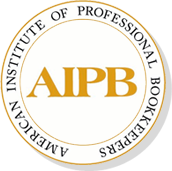208 pages [76 self-teaching + 132 self-quizzes with detailed answers]
Section 1: How to use ratios. Measure a firm’s financial health. Where to find the numbers to use for ratios.
Section 2: Can the firm pay its short-term obligations? Find out with the current and quick (“acid test”) ratios.
Section 3: Measure liquidity (ability to turn assets into cash). Measure the quality of your company’s A/R and collection efforts and foresee problems in future sales, pricing or inventory with the inventory-turnover and A/R-turnover ratios.
Section 4: Rate a firm’s efficiency. See if sales are providing sufficient return on your company’s investment in fixed assets with the sales-to-fixed-assets ratio. Evaluate your company from one period to another period using the profit-margin ratio.
Section 5: Debt management. Predict when losses will start to hurt your company’s credit rating with the total-liabilities-to-total-assets ratio. Forecast long-term solvency and when the company must stop borrowing with the times-interest-earned ratio.
Section 6: Evaluating return on investment. Uncover the true return on investment with the return-on-investment ratio. Assess return to stockholders with the return-on-stockholders’ equity ratio.
Section 7: More tools for evaluating company performance. Learn how to compare financial statement items year to year and how to evaluate key sections of the income statement and balance sheet.
Section 8: Company v. industry performance. Where to find standards of comparison and industry norms to see how your company is doing.
Section 9: Stock market ratios. Easily measure any stock’s performance the way the pros do. Master the earnings-per-share ratio . . . price-earnings ratio . . . dividend-payout ratio.
Publisher: AIPB


MOHAMMAD –
The course provides knowledge beyond Income Statement and Balance Sheet. It provides a tool in finalizing the accounts by doing an analyses of income statement and balance sheet of two or more periods and bringing to fore probable future financial problems that a company may face. The course also provides knowledge why a successful company may be facing working capital problems, may be more riskier and allows one to do investment analysis etc.
Upvote if this was helpful (0) Downvote if this was not helpful (0) Flag for removal
ELIZABETH –
Very comprehensive
Upvote if this was helpful (0) Downvote if this was not helpful (0) Flag for removal
KATHY –
Info a little confusing
Upvote if this was helpful (0) Downvote if this was not helpful (0) Flag for removal
DARSCHE –
Great. Very interesting subjects. Subjects that I never knew of when I went to college. Easy to understand.
Upvote if this was helpful (0) Downvote if this was not helpful (0) Flag for removal
CLAUDE –
clear and easy to follow
Upvote if this was helpful (0) Downvote if this was not helpful (0) Flag for removal
DAWN –
This was an excellent review for me.
Upvote if this was helpful (0) Downvote if this was not helpful (0) Flag for removal
PATRICK –
I learned a great deal from this book about the Balance Sheet and Income Statement accounts in a more in depth scope. I also learned about some of the trends to look for when determining the financial condition of a company and how to calculate some of the financial ratios.
Upvote if this was helpful (0) Downvote if this was not helpful (0) Flag for removal
LINH –
The material of this course is excellent.
Upvote if this was helpful (0) Downvote if this was not helpful (0) Flag for removal
ELIZABETH –
Clear examples, good coverage, would recommend.
Upvote if this was helpful (0) Downvote if this was not helpful (0) Flag for removal
REBECCA –
Great book and course.
Upvote if this was helpful (0) Downvote if this was not helpful (0) Flag for removal
RICK –
A good review course.
Upvote if this was helpful (0) Downvote if this was not helpful (0) Flag for removal